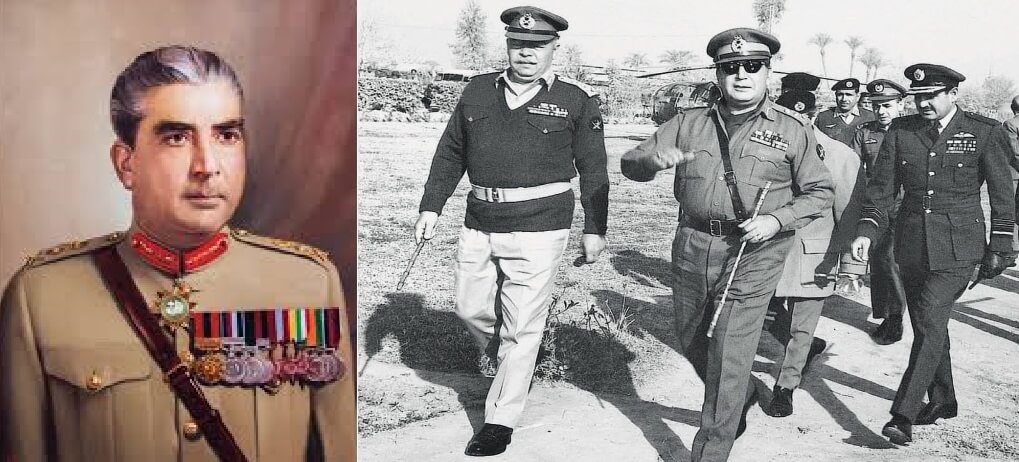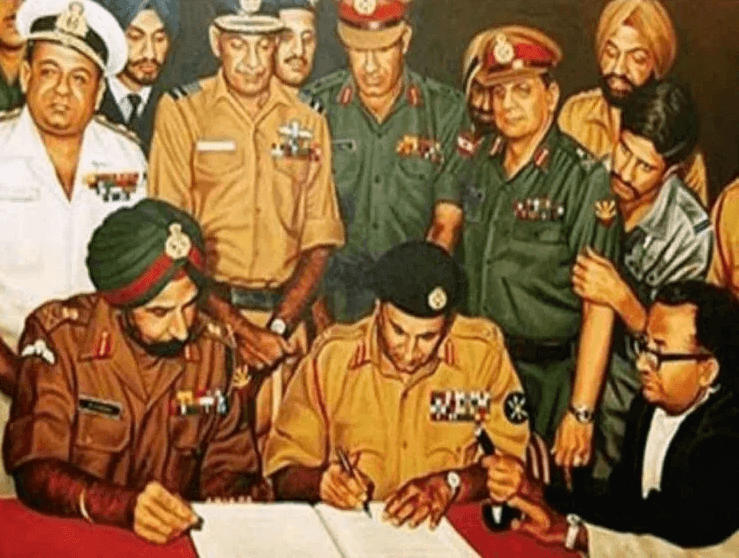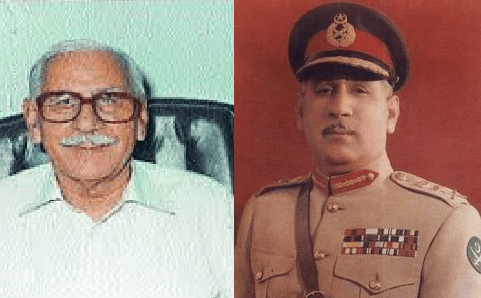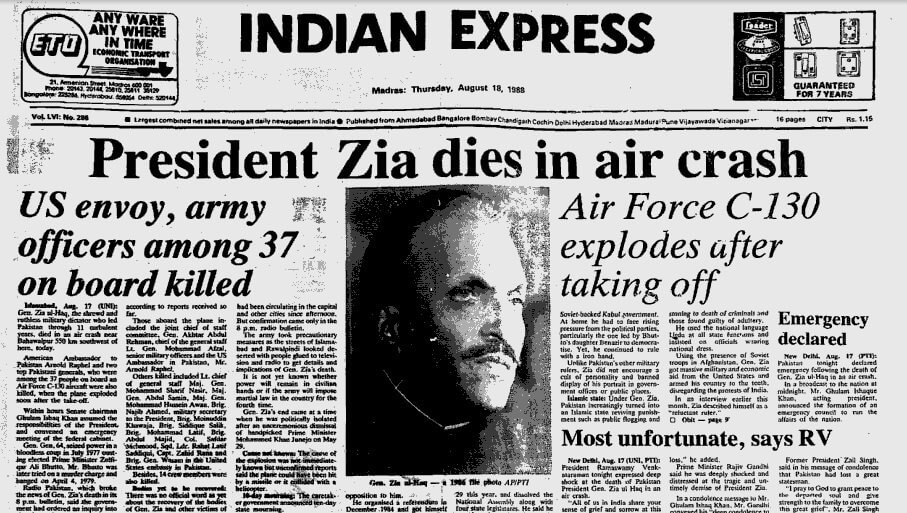Enemies within: Generals who destroyed Pakistan 1

General Agha Muhammad Yahya Khan’s tenure (1969–1971) was one of the most turbulent and darkest periods in Pakistan’s history. As the second military ruler and third President of Pakistan, his rule was marked by political chaos, civil war, secession of East Pakistan, and Pakistan’s humiliating military defeat in 1971. A close confidant of Ayub Khan, Yahya was appointed Commander-in-Chief of the Army in 1966. Eventually, Yahya Khan assumed power as President and declared martial law, as the Chief Martial Law Administrator following Ayub Khan’s resignation in March 1969.
He positioned himself as a leader who would restore democracy. He announced his intention to hold general elections — a historic move that would lead to Pakistan’s first nationwide vote based on adult franchise. In 1970, the elections were held and Sheikh Mujibur Rahman’s Awami League won a landslide victory in East Pakistan, securing an overall majority in the National Assembly. But the West Pakistani establishment, including Yahya and Zulfikar Ali Bhutto, refused to accept the outcome. Rather than allow Mujib to form the government, Yahya postponed the National Assembly session, triggering massive unrest in East Pakistan.
In March 1971, Yahya Khan’s regime launched Operation Searchlight — a brutal military crackdown on Dhaka and other parts of East Pakistan. What followed was widespread massacres, mass rapes, and the displacement of over 10 million people, many of whom fled to neighbouring India. The crisis soon escalated into a full-scale war between India and Pakistan in December 1971.
Majors and Colonels mutiny (1971)

The Awami League, under Sheikh Mujibur Rahman, won a majority in the 1970 general elections; however, the West Pakistani leadership, particularly General Yahya Khan and Zulfikar Ali Bhutto, refused to hand over power. This triggered widespread unrest in East Pakistan (now Bangladesh), and the Pakistan Army launched Operation Searchlight — to brutally suppress the Bengali political activists.
Also Read: Enemies within: Generals who destroyed Pakistan 1
This triggered a mutiny by mid-ranking officers, including majors and colonels who didn’t like the army being used as a political instrument to deny East Pakistan its electoral mandate. A group of majors and colonels were disturbed by the atrocities – rape, mass killings, and destruction of villages. Hence they refused to carry out orders, criticised the leadership and attempted to confront the higher authorities. It was not a planned or coordinated coup but a spontaneous reaction. The Pakistan Army’s top leadership took harsh disciplinary decisions to suppress the revolt. Officers involved in the revolt were court-martialled, imprisoned, or dismissed. Some were reportedly executed – even without a trial for participating in the revolt which remains a well-kept secret – even in official military histories and textbooks.
But all said and done, the mutiny was an early sign of cracks within the Pakistan Army.

The outcome was devastating for Pakistan. On December 16, 1971, the Pakistan Army surrendered in Dhaka, and East Pakistan became the newly independent nation of Bangladesh.
Gen Yahya Khan was forced to resign and hand over power to Zulfikar Ali Bhutto on December 20, 1971, due to immense pressure. He was placed under house arrest and died in 1980. He is mentioned in history as the general who presided over the breakup of Pakistan.
Gen Tikka Khan – the Butcher of Bengal and Pakistan’s first COAS (1972 to 1976)
Tikka Khan – joined the Pakistan Army as a major in the Regiment of Artillery in 1947 and led the 15th Infantry Division in the Indo-Pakistani war of 1965. In 1969 Tikka Khan was promoted to lieutenant general and commanded the IV Corps in Lahore. He also served as martial law administrator of Punjab under President Yahya Khan. In 1972, President Zulfikar Ali Bhutto removed Lt. Gen. Gul Hassan Khan as commander-in-chief of the army. Tikka Khan replaced him as the first Chief of Army staff.

During his term as the Chief of Pakistan Army, Tikka Khan launched military operations to crush the Baloch independence movement and supported Bhutto to expand the clandestine nuclear weapons programme.
Significantly on the verge of his retirement, Bhutto asked Tikka Khan his opinion about Zia, but Tikka Khan remarked, “I thought he was dull. In any case, he was the most junior of all the eight lieutenant generals.” However, Bhutto ignored his recommendations and appointed Lieutenant General Zia-ul-Haq as army chief. After retirement from the military in 1976, General Tikka Khan also called the Butcher of Bengal because of the killing of thousands of civilians during his stint as governor of East Pakistan and commander of the army’s Eastern Command in March 1971 was appointed as National Security Advisor by Prime Minister Zulfikar Ali Bhutto.
However, his tenure was short and ended when Gen Zia-ul-Haq who succeeded him as army chief imposed martial law in 1977 and ordered the military police to arrest both Bhutto and General Tikka Khan and place them under house arrest.
General Muhammad Zia-ul-Haq’s rule (1978 -1988)

Zia-ul-Haq was elevated to the rank of General and appointed as the 2nd Chief of the Army Staff by Prime Minister Zulfikar Ali Bhutto in 1976.
Significantly, there were at least eight officers senior to him in order of seniority. These included Lt. Gen. Muhammad Shariff, Akbar Khan, Aftab Ahmed, Azmat Baksh Awan, Ibrahim Akram, Abdul Majeed Malik, and Ghulam Jilani Khan. But Zia who was the junior-most, superseded the seven senior Generals.
To make way for the transition, Zia then a Major Gen was promoted to Lieutenant General and appointed Commander of the II Strike Corps at Multan in 1975. On 1 March 1976, Prime Minister Zulfikar Ali Bhutto appointed Zia as Chief of Army Staff elevating him to a four-star rank.
But barely a few months later, Bhutto paid for his mistake. On 5 July 1977 General Zia launched Operation Fair Play to overthrow Bhutto, suspend the constitution and stage the second coup in Pakistan’s history. As per Zia’s orders, Bhutto and members of his cabinet were arrested by the Military Police. Bhutto tried to call Zia but all telephone lines were disconnected.

After dismissing Prime Minister Bhutto, Zia-ul-Haq declared martial law and appointed himself Chief Martial Law Administrator. He took over as President of Pakistan on 16 September 1978. On 4 April 1979, Bhutto was hanged, after the Supreme Court upheld the death sentence passed by the Lahore High Court.
Zia was strongly in favour of establishing Nizam-e-Mustafa (“Rule of the prophet”).
“Pakistan which was created in the name of Islam will continue to survive only if it sticks to Islam. That is why I consider the introduction of [an] Islamic system as an essential prerequisite for the country,” he said in his first televised speech. Zia introduced Islamic banking, Hudood Ordinances (Hudood means limits or restrictions in Islamic law), and Sharia laws.
But Zia’s greatest contribution to Pakistan’s history was the Islamisation of the Army and the doctrine of proxy war to “bleed India by a thousand cuts.” Zia gave the army a distinct Islamic character. Officers were encouraged to attend prayer meetings and chant Islamic slogans. Islamic teachings and religious content were incorporated into military training and education. Religious credentials started playing a role in promotions and postings, fostering a generation of commanders deeply influenced by Islamist ideology.
Zia wanted to keep India perpetually distracted, economically drained, and politically unstable. So he cultivated jihadi groups — laying the foundation for the military-jihadi nexus that persists to this day. During his tenure ISI, began to support the terrorist groups in Punjab and Kashmir. During the 1980s, Pakistan supported the Khalistan movement, providing training, arms, and sanctuary to Sikh separatist groups like Babbar Khalsa and the Khalistan Commando Force. He aimed to weaken India from within, without direct military confrontation. Hence he laid the groundwork for destabilizing Kashmir. The Inter-Services Intelligence (ISI) began training, arming, and financing Kashmiri and Pakistani militants, encouraging infiltration into the region.

Zia died in a mysterious plane crash on 17 August 1988, along with the U.S. Ambassador to Pakistan and several senior army officials. The board of inquiry set up to investigate the crash concluded ‘the most probable cause of the crash was a criminal act of sabotage perpetrated in the aircraft’. It also suggested that poisonous gases were released which incapacitated the passengers and crew, which explains why no Mayday signal was given. Surprisingly the flight recorder (black box), usually installed in the C-130 aircraft — could not located after the crash.


[…] Also Read: Enemies within: Generals who destroyed Pakistan 2 […]
[…] Enemies within: Generals who destroyed Pakistan 2 […]